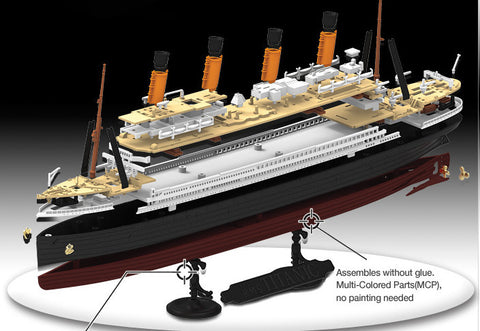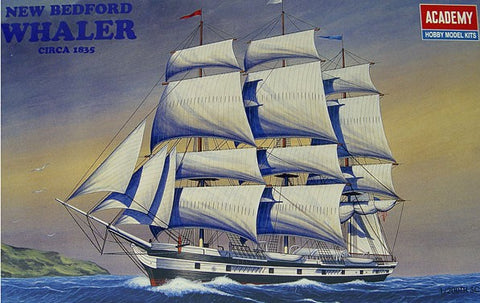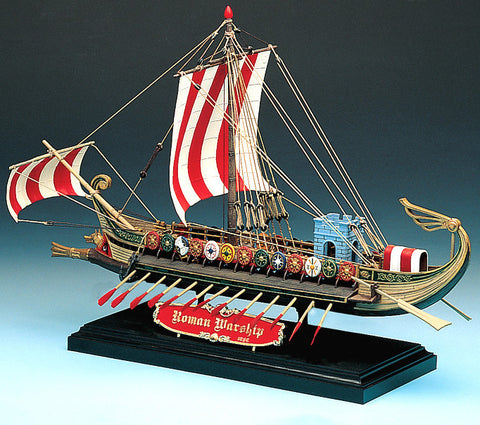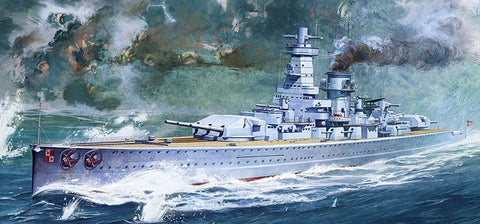
Academy Ships 1/350 HMS Warspite Queen Elizabeth Class Battleship Kit
Estimated Shipping: 2-3 Business Days
ACY-14105Several years prior to the outbreak of World War I, the Royal Navy commissioned a new class of battleships to replace the aging Iron Duke class. These new battleships were faster, better armored and hosted superior firepower than its predecessors and were a formidable match of the best battleships of the day. Armed with eight 15 inch guns mounted in pairs, the design had two turrets forward and two aft. The first in class was the HMS Queen Elizabeth followed by Warspite, Valiant, Barham, Malaya, and Agincourt.
HMS Warspite was laid down in October 1912, launched in November 1913, and commissioned in March 1915. Being one of the Royal Navy's best capital ships, you might expect the ship's non-combat record to be uneventful, but reading through her service history, she might have been easily called HMS Career Killer. In her first months of service, Warspite ran aground in 1915 before colliding with her sister ship HMS Barham later in the year. In the Battle of Jutland, Warspite took 15 hits by heavy caliber guns and was severely damaged. Her steerage was jammed during a maneuver and her captain opted to maintain speed with the jammed rudder resulting in the Warspite sailing in circles. These maneuvers took Warspite out of the line and distracted the Germans from finishing off other damaged Royal Navy targets. After two complete circles, steering was restored and Warspite continued to fight until being ordered off the line. Warspite put 259 15 inch rounds into the German lines before she was forced to withdraw.
After Waspite was repaired from its action at Jutland, she resumed her career-limiting activities with collisions with another sister ship, HMS Valiant and later a destroyer. After the war, Warspite served in the Atlantic Fleet with much of that time in the Mediterranean and finally becoming the flagship of the Mediterranean Fleet. She returned to the Atlantic Fleet by 1930 and became caught-up in the famous Royal Navy Mutiny at Invergordon. In 1934, Warspite began a major overhaul in which she received improved engines, an aircraft hangar, improved firepower and armor. When World War II broke out in Europe, Warspite was back with the Home Fleet and took part in many actions that damaged or destroyed a number of German combatants. While in the Mediterranean in 1940, Warspite gained bragging rights with the longest gunnery hit on a moving target by a moving shooter at 26,000 yards (over 12.8 nautical miles). Warspite destroyed several other German and Italian ships before departing for Bremerton Washington (the Colonies) in 1941 to replace her main guns. After her servicing in the US, Warspite served in the Indian Ocean before returning to the Mediterranean in 1943. In mid-September of 1943, Warspite was attacked by German bombers and was struck three times by the Fritz-X guided bomb. One struck near her funnel and the damage blew through the bottom of the hull. With the help of some US Navy tugboats, Warspite was taken to Gibraltar for repairs that would get her back to England. While the extensive damage wasn't completely repaired, Warspite was back at sea providing naval gunfire support for the D-Day landings. Despite suffering damage from a magnetic mine (and some quick repairs), Warspite continued to provide naval gunfire support before returning to port in early 1945, her mission completed.
Kit features 2-piece full hull with internal reinforcing members, detailed decks with engraved plank texture, highly detailed superstructures, full weapons suite (including light AA mounts with separate gun shields), ship's boats and life rafts, filigree masts and yardarms, hangar interior detail, excellent rendition Walrus amphibious reconnaissance biplane, injection-molded anchor chains, display stand with nameplate and photo-etch crane booms. Completed model is approximately 22" long. Decals represent aircraft insignia, ensigns and jacks while painting guide displays both and starboard camouflage patterns.
- Array of pilot vessels as well as observation aircraft
- Over 650 parts
- Highly detailed bridge assembly
- Phot etched parts
- Includes display stand with name plate












